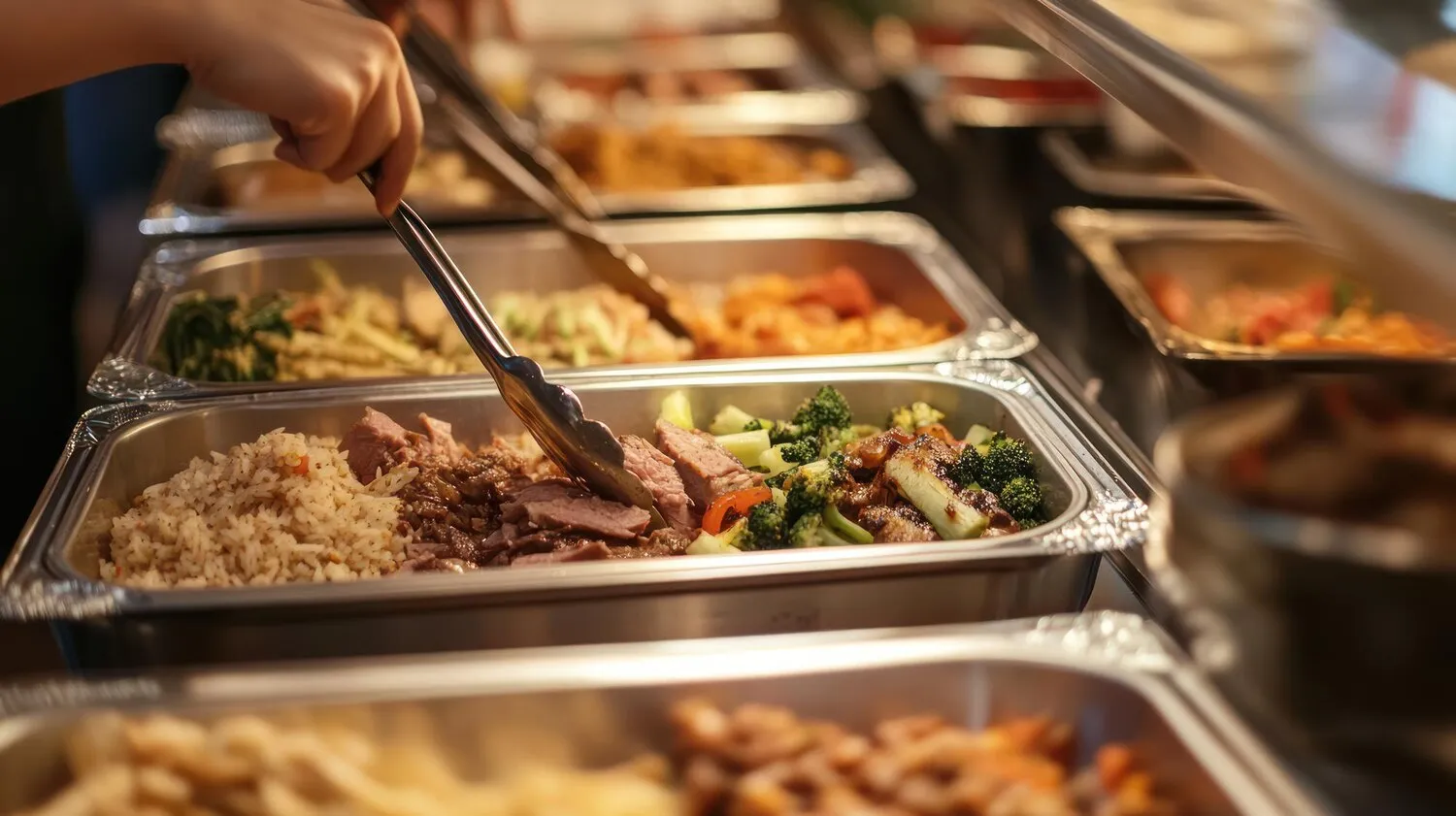
Buffet de Acompanhamentos
A buffet with a wide variety of hot and cold side dishes, including salads, rice, beans, and other traditional Brazilian accompaniments.
Nutrition Facts
* The % Daily Value (DV) tells you how much a nutrient in a serving of food contributes to a daily diet. 2,000 calories a day is used for general nutrition advice.
Brazilian cuisine is a melting pot of indigenous, African, and European (primarily Portuguese) influences. Indigenous ingredients and cooking methods blended with African flavors brought by enslaved people and Portuguese culinary traditions. The 'Buffet de Acompanhamentos' reflects this fusion by showcasing a wide variety of side dishes, some with native roots, others adapted from European or African recipes, all tailored to Brazilian tastes and availability of ingredients.
The 'Buffet de Acompanhamentos' is central to Brazilian dining culture, emphasizing sharing, abundance, and the enjoyment of a diverse array of flavors. It highlights the importance of communal meals and the social aspect of eating.
Social Gathering
Brazilian meals are often social events, and the buffet style encourages sharing and conversation as people serve themselves from the various dishes.
Variety and Abundance
The buffet showcases the diversity of Brazilian cuisine and offers something for everyone, highlighting the country's abundance of fresh ingredients.
Flexibility and Customization
Diners can customize their plate to their liking, choosing the specific accompaniments that appeal to them and creating their own flavor combinations.
The flavors of a 'Buffet de Acompanhamentos' are diverse and vibrant, reflecting the breadth of Brazilian cuisine. Expect a balance of savory, tangy, and subtly sweet tastes, with variations depending on the region.
Expect to find savory flavors from beans and seasoned meats (if included), tangy notes from vinaigrettes and salads, and subtly sweet elements from certain vegetable dishes or rice preparations. Common ingredients include rice (various types), beans (black, pinto, etc.), salads featuring fresh vegetables and herbs, farofa (toasted cassava flour), vinaigrettes, and cooked vegetables like collard greens (couve) or squash (abóbora). Seasonings often include garlic, onion, parsley, cilantro, lime juice, olive oil, and various spices depending on the specific dish.
Balance of Flavors
Ensure a mix of savory, tangy, and slightly sweet dishes to cater to different palates. Consider including both hot and cold options.
Visual Appeal
Arrange the dishes attractively, using different colors and textures to create a visually appealing spread. Fresh herbs can add a final touch of elegance.
Seasonal Ingredients
Utilize seasonal ingredients whenever possible for the best flavor and freshness. Visit local markets to find the freshest produce.
Explore additional Buffet dishes and restaurants
Explore BuffetDiscover top dining spots and culinary experiences in Macaé.
Explore MacaéLearn more about the food culture, restaurant scene, and culinary heritage of Brazil.
Explore Brazil